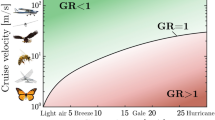Abstract
Aircraft are inevitably affected by gust during flight, which disturbs the regular operations of pilots and worsens the ride quality. In more grievous cases, flight mission cannot be completed and the flight safety may be disserved. In order to improve the ride quality and the fatigue life of the plane structure under the affect of gust, it is necessary to explore and validate the gust alleviation schemes. Through the low-speed wind tunnel test, the gust alleviation active control technology applied to elastic aircraft is studied. For a large-type passenger plane configuration with high aspect ratio wing, a test system was designed and three gust alleviation control schemes with PID controllers were proposed. Finally the gust alleviation control low-speed wind tunnel test was carried out in the FD-09 wind tunnel. Test results showed that at certain speed and gust frequency, all of the 3 control schemes can alleviate the acceleration at fuselage and wing-tip to a certain extent, as well as the bending moment of wing-root. The gust alleviation control scheme, which uses aileron, elevator and canard as control surfaces synthetically, gives the most satisfying gust alleviation effect.
Similar content being viewed by others
References
Robert L, Swaim P E. Aeroelastic interactions with flight control. AIAA 83-2219, 1983
Fuller J R. Evolution of airplane gust accelerations design requirements. J Aircraft, 1995, 32: 235–246
Murrow H N, Pratt K G, Houbolt J C. NACA/NASA research related to evolution of U.S. gust design criteria. AIAA 89-1373, 1989
Jin C J, Xiao Y L. Flight Principles in Atmosphere Turbulence (in Chinese). Beijing: National Defense Industry Press, 1992. 11–48
Wen C Y. Modern Flight Control (in Chinese). Beijing: Beihang University Press, 2004. 181–186
McKenzle J R. B-52 control configured vehicles ride control analysis and flight test. AIAA 73-782, 1973
Swortzel F R, Barfield A F. The CCV flighter program demonstrating new control methods for tactical aircraft. AIAA 76-889, 1976
Disney T E. C-5A active acceleration alleviation system. J Spacecraft Rocket, 1977, 14: 81–86
Matsuzaki Y, Ueda T, Miyazawa T, et al. Wind tunnel test and analysis on gust acceleration alleviation of a transport-type wing. AIAA 87-0781, 1987
Hahn K U, König R. ATTAS flight test and simulation results of the advanced gust management system LARS. AIAA 92-4343, 1992
Perry B I, Cole S R, Miller G D. Summary of an active flexible wing program. J Aircraft, 1995, 32: 10–15
Pendleton E, Bessette D, Field P. The active aeroelastic wing flight research program-technical program and model analytical development. AIAA 1998-1972, 1998
Moulin B, Karpel M. Gust accelerations alleviation using special control surfaces. J Aircraft, 2007, 44: 17–25
Ricci S, Scotti A, Cecrdle J. Active control of three-surface aeroelastic model. J Aircraft, 2008, 45: 1002–1013
Gaspari A D, Ricci S, Riccobene L. Active aeroelastic control over a multi-surface wing: modeling and wind tunnel testing. AIAA 2007-2138, 2007
Ricci S, Scotti A. Wind tunnel testing of an active controlled wing under gust excitation. AIAA 2008-1727, 2008
Penning K B, Zink P S, Wei P. GLA and flutter suppression for a sensorcraft class concept using system identification. AIAA 2008-7188, 2008
Tan Z Y, An J W. Application of H_infinity theory to gust load alleviation control (in Chinese). Fire Control & Command Control. 2005, 30: 93–95
Liu S Q, Hu J C, Shen Y. Gust alleviation and ride quality control based on covariance assignment for the aircraft (in Chinese). J Tsinghua Univ, 2007, 47: 1201–1207
Zhang J H, Li Z S, Zhan M Q. Application of LQG theory to gust load alleviation system (in Chinese). Flight Dynam, 2007, 25: 61–64
Liu S Q, Zhu J H, Hu J C. Design of flight control law of gust alleviation for flexible aircraft (in Chinese). J Syst Simul, 2007, 19: 2519–2522
Gao J, Wang L X, Zhou K. Gust load alleviation control of aircraft with large ratio flying wing configuration (in Chinese). J Beijing Univ Aeron Astron, 2008, 34: 1076–1079
Chen G B, Zou C Q, Cao Q K. Experimental investigation on active flutter suppression for a wing/store system (in Chinese). J Beijing Univ Aeron Astron, 1989, 4: 1–8
Gao P, Guan D. Integrated design of flexible structure/flutter actinve control law (in Chinese). Acta Aeronautica Et Astronautica Sinica, 1995, 16(5): 521–527
Chen G B, Zou C Q. Application to synthesis of aeroservoelasticity (in Chinese). J Beijing Univ Aeron Astron, 1996, 22: 279–283
Chen L, Wu Z G, Yang C, et al. Active control and wind tunnel test verification of multi-control surfaces wing for gust alleviation (in Chinese). Acta Aeronautica Et Astronautica Sinica, 2009, 30: 2250–2256
Shao K, Wu Z G, Yang C. Design of an adaptive gust response alleviation control system: simulations and experiments. J Aircraft, 2010, 47: 1022–1029
Karpel M, Moulin B, Presente E. Dynamic gust accelerations analysis for transport aircraft with nonlinear control effects. AIAA 2008-1994, 2008
Tiffang S H, Karpel M. Aeroservoelastic modeling and applications using minimum-state approximations of the unsteady aerodynamics. AIAA 89-1188, 1989
Mukhopadhyay V. Flutter suppression control law design and testing for the active flexible wing. J Aircraft, 1995, 32: 45–51
Baldelli D H, Chen P C. Unified rational function approximation formulation for aeroelastic and flight dynamics analysis. AIAA 2006-2025, 2006
Liu X Y, Wu Z G, Yang C, et al. Flow field analysis and experimental investigation on gust generator (in Chinese). J Beijing Univ Aeron Astron, 2010, 36: 803–807
Author information
Authors and Affiliations
Corresponding author
Rights and permissions
About this article
Cite this article
Wu, Z., Chen, L. & Yang, C. Study on gust alleviation control and wind tunnel test. Sci. China Technol. Sci. 56, 762–771 (2013). https://doi.org/10.1007/s11431-013-5131-7
Received:
Accepted:
Published:
Issue Date:
DOI: https://doi.org/10.1007/s11431-013-5131-7




